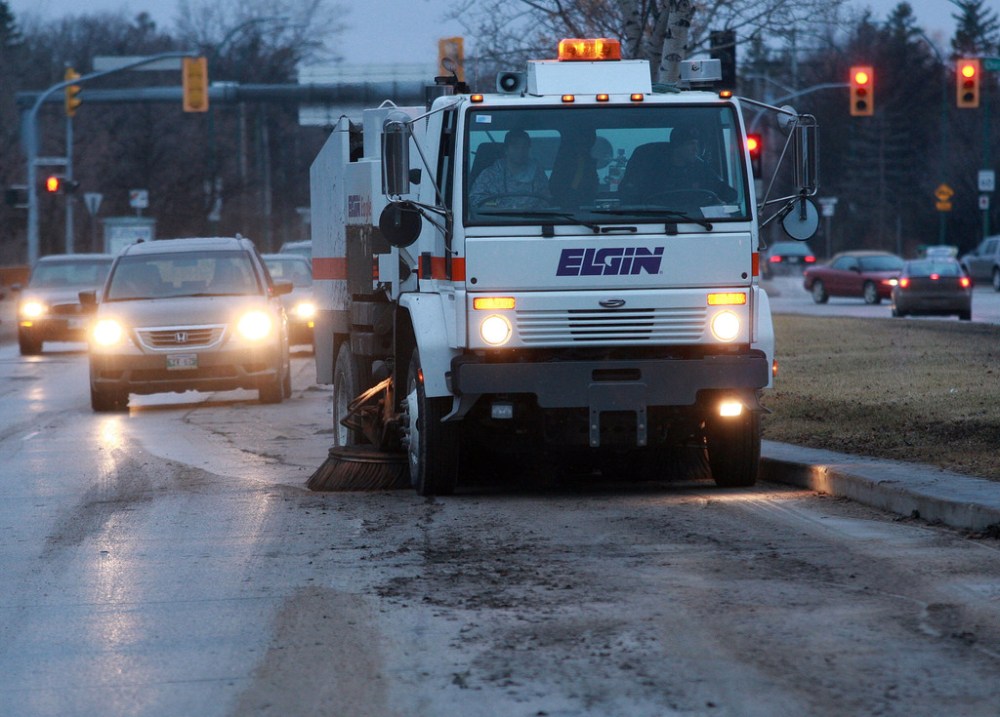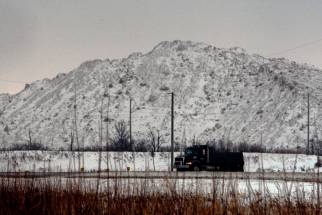Making the most of Winnipeg’s snow mountains Sand left behind at disposal sites could be recycled
Read this article for free:
or
Already have an account? Log in here »
To continue reading, please subscribe:
Monthly Digital Subscription
$0 for the first 4 weeks*
- Enjoy unlimited reading on winnipegfreepress.com
- Read the E-Edition, our digital replica newspaper
- Access News Break, our award-winning app
- Play interactive puzzles
*No charge for 4 weeks then price increases to the regular rate of $19.00 plus GST every four weeks. Offer available to new and qualified returning subscribers only. Cancel any time.
Monthly Digital Subscription
$4.75/week*
- Enjoy unlimited reading on winnipegfreepress.com
- Read the E-Edition, our digital replica newspaper
- Access News Break, our award-winning app
- Play interactive puzzles
*Billed as $19 plus GST every four weeks. Cancel any time.
To continue reading, please subscribe:
Add Free Press access to your Brandon Sun subscription for only an additional
$1 for the first 4 weeks*
*Your next subscription payment will increase by $1.00 and you will be charged $16.99 plus GST for four weeks. After four weeks, your payment will increase to $23.99 plus GST every four weeks.
Read unlimited articles for free today:
or
Already have an account? Log in here »
Hey there, time traveller!
This article was published 25/05/2022 (1293 days ago), so information in it may no longer be current.
Over the next few months, massive mountains of snow that were hauled off Winnipeg streets to city snow dumps will finally melt, leaving a sizeable pile of road sand behind.
In what’s believed to be a city first, that road traction material at snow disposal sites will be examined to see if it can be recycled for a new use.
“We prefer to try to recycle that material if we can. We just need to see, operationally, how much debris is there…,” said Michael Cantor, the city’s streets maintenance manager. “The whole recycling of winter sand is relatively new.”

Cantor said the city began recycling some road sands collected through spring street sweeping in 2018.
A pilot project at the former Summit Road landfill designed to restore the site’s “native prairie landscape” mixed the road sand with biosolids (a solid sewage treatment byproduct) and woodchips (primarily from trees infected by Dutch elm disease or the emerald ash borer). The city is now seeking provincial approval to make the project permanent.
If the snow dump sands are intact enough to use, they would be added to the project, Cantor said.
“As long as it could be used, we’re happy… and we don’t have to bury it somewhere else,” he said.
Cantor said he’s not aware of alternative repurposing options for the sand, which vehicles wear down into small particles before the winter is over.
“We cannot reuse it as a winter (street) sand… because it breaks (down during the winter). You won’t get that traction because the aggregate’s too small and it would be flying off the street very fast. It’s kind of getting to a stage (that it’s) almost a dust at some point,” he said.

A whopping 114,000 tonnes of road sand were spread along Winnipeg’s snow-blanketed streets during the winter of 2021-22, well above the 43,000 tonnes used in the previous winter.
Meanwhile, there is no exact measurement taken for how much sand gathers at Winnipeg’s snow dump sites, which are located on McPhillips Street and Kenaston Boulevard, as well as at the South End and West End sewage treatment plants. To this point, that material has not been recycled.
City spokesman Ken Allen noted Winnipeg officials are months away from finding out if it’s feasible to expand the sand recycling, since the massive snow piles are still expected to take months to melt.
“The huge piles of snow are comprised of not just snow and ice, but also sand, salt residue, as well as other debris, so it is too early to say how much sand could potentially be recovered at this time,” wrote Allen, in an emailed statement.
The city hauled nearly 1.8 million cubic meters of snow to the disposal sites this past winter, which all reached their capacity limits. The peaks of some snow piles at those sites are estimated to be between 50 feet and 100 feet tall.
While the snow at the disposal sites typically melts by the end of August, part of this year’s haul could be around until sometime in September and may require a little help to break down, wrote Allen.

“In past years where we experienced high snowfall accumulations it has been necessary, mid-summer, to mechanically open up the snow pile to ensure the snow will melt so the snow disposal site floor can dry up and be prepared for the upcoming winter … This procedure may be required again this year,” he noted.
joyanne.pursaga@freepress.mb.ca
Twitter: @joyanne_pursaga

Born and raised in Winnipeg, Joyanne loves to tell the stories of this city, especially when politics is involved. Joyanne became the city hall reporter for the Winnipeg Free Press in early 2020.
Our newsroom depends on a growing audience of readers to power our journalism. If you are not a paid reader, please consider becoming a subscriber.
Our newsroom depends on its audience of readers to power our journalism. Thank you for your support.








